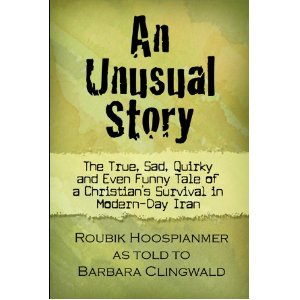Reporters and readers all want a good story. Your story should be interesting and relevant to the audience, and it must be written clearly enough that it can be quickly and easily understood. What makes a story interesting is often a combination of the interests of the audience, the interests and abilities of the reporter, and a long history of journalistic tradition.
The question “What is news?” is a primary philosophical issue in media relations. Many of us are indifferent to sports, yet it makes up a large part of mainstream news. Both TV and Radio set aside a lot of time for the weather, even though it is usually pretty straightforward and it all comes from the same place. Without getting into this debate at length we will look at the key fundamentals of what constitutes a ‘newsworthy’ story.
One key element to any story is an image. Images accompanying your story are a real asset to increasing its appeal. Children and animals are always encouraged, as long as it fits with the story. For example, you are submitting a story about a large donation of money raised and select an image of individuals presenting the cheque. This will not make front page news. If however you submit an image demonstrating where the money is being used, such as for new facilities to benefit children at a foster home or a previously run down area that has been completely renovated from recognition, then this will be much more appealing.
When an editor needs to decide whether to run with a particular story, he/she will ask how well the story meets what they will determine as newsworthy criteria, and below are some of those crucial elements your story should contain:
Topical/ Timing
The word news means exactly what it says on the tin; things which are new. We are all used to receiving the latest news on whats going on, and there is so much going on that old news is quickly discarded and will become ‘old’ very quickly.
A story with only average interest needs to be told quickly if it is to be told at all. If it happened today, it’s news. If the same thing happened last week, it’s no longer interesting.
When you are looking to get your story in the news, you must consider topicality and timeliness.
Relevance to Audience/ Significance
The number of people affected by the story is important. An earthquake killing thousands will be very relevant news.
Although many stories are run because they are completely random and something that will be a conversation starter, however this is less likely on a channel such as the BBC or via the Financial Times which more often than not will remain factual and significant. Being sensitive to the market you are trying to reach, and demonstrating that your story idea is relevant to that audience will increase your chances of getting coverage. Research your target audience and make sure your story fits with them.
Proximity/ Local Angle
Stories, which happen near to us, have more significance. The closer the story to home, the more newsworthy it is.
It is important to note that proximity does not have to mean geographical distance. Stories from countries with which we have a particular bond or similarity have the same effect.
Prominence
Famous people get more coverage just because they are famous. If you become seriously ill it is unlikely to become news, but if Cheryl Cole becomes ill for example, it will be big news.
Stories that affect, or have the potential to affect everyone though ARE newsworthy. A story about a child with a rare disease is interesting because it is unusual. But it is also effective because all parents worry about the health of their children and are interested in children’s health generally. Reporters like stories that their audience can relate to, no matter how unusual the topic may be. Universality is closely related to relevance to the audience.
Human Interest
News is about people. Human interest stories are a bit of a special case. They often disregard the main rules of newsworthiness; for example, they don’t date as quickly, they need not affect a large number of people, and it may not matter where in the world the story takes place.
Human interest stories appeal to emotion. They aim to evoke responses such as amusement or sadness. Television news programs often place a humorous or quirky story at the end of the show to finish on a feel-good note. Newspapers often have a dedicated area for offbeat or interesting items.
If there are a lot of newsworthy stories on a particular day then some stories will be dropped, sometimes this just can not be helped. Should this be the case, it is worth not ‘dating’ your story so that it can be picked up at a later date, but then this is the benefit of human interest stories that more often than not, will not be ‘deated’. Many stories can and will be delayed until a new slot becomes available, time-sensitive news will often be dropped permanently.
Conflict. Disagreement is generally more newsworthy than agreement. This is why politics and sports make easy news: it is easy to find disagreement. Because the reporter wants a balanced story, he or she will often look for someone to disagree with the point of view you express, or at least to offer a different perspective so be prepared for this.



